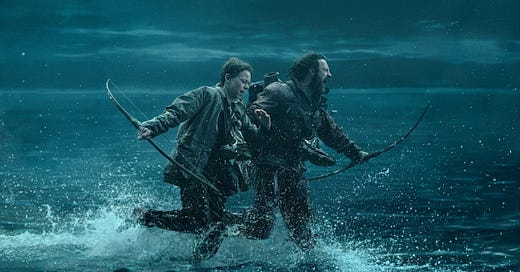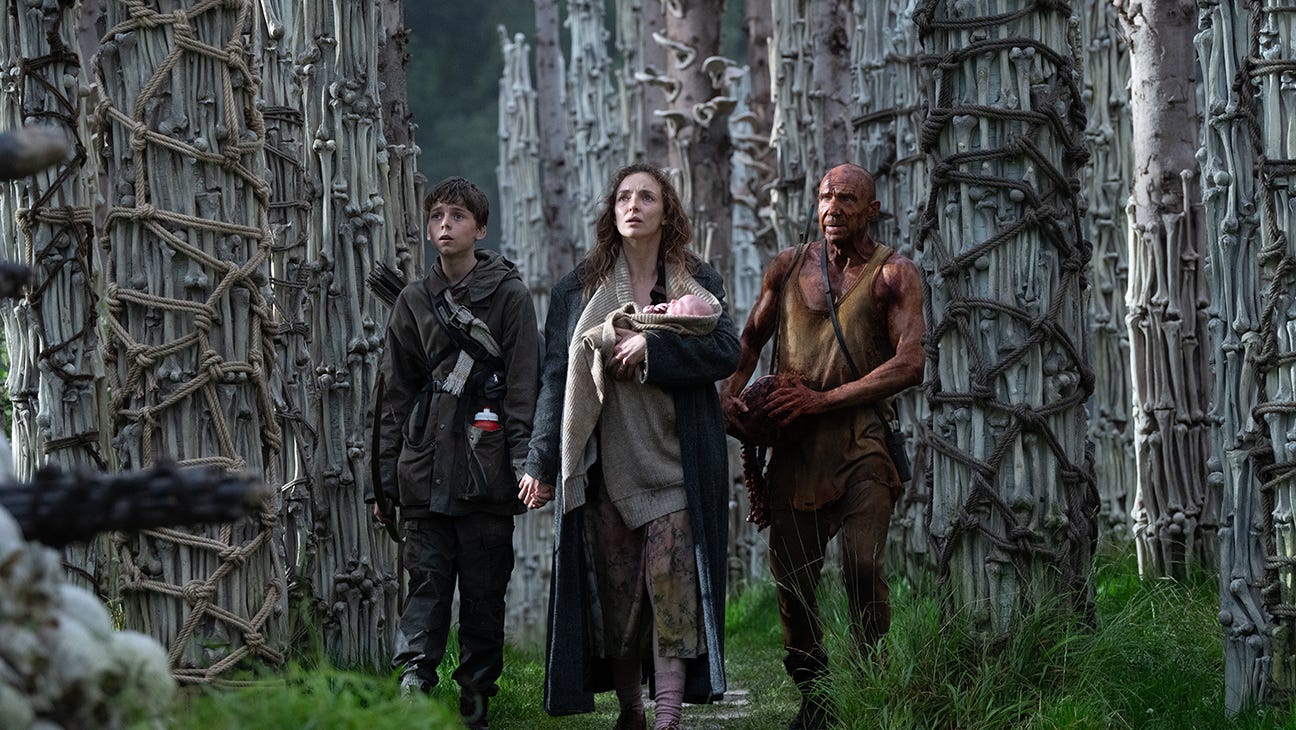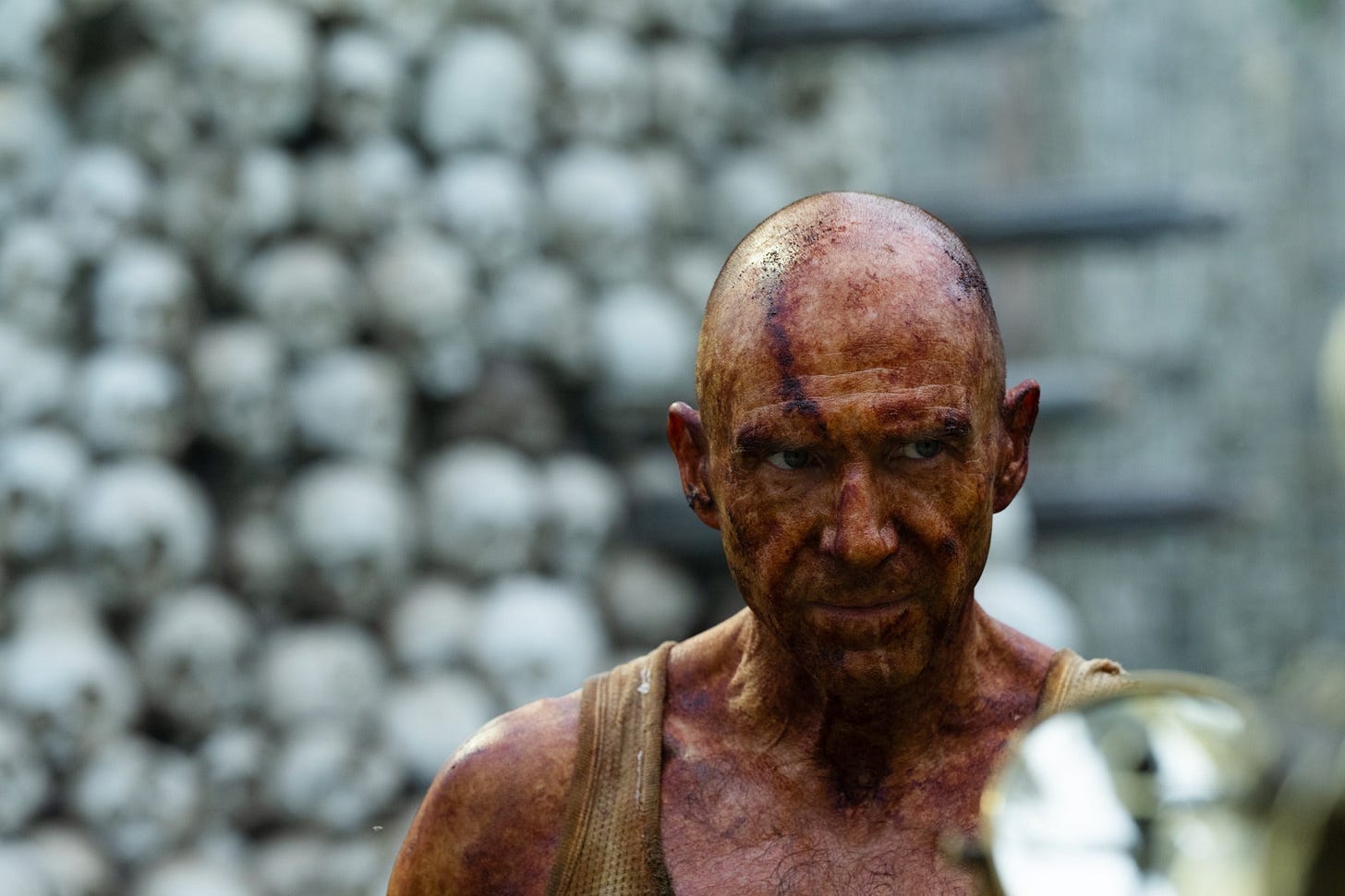The Dead Remember: How 28 Years Later was more poignant than we ever expected
28 Years Later Review
It has been 23 years since Danny Boyle has stepped behind the lens for a 28 film and this time he has brought the big guns. Boyle and Civil War writer and director Alex Garland team up to revive the zombie franchise. But instead they have gone one step further - they have transcended it. 28 Years Later is a stylistic, ambitious and emotional chapter that I do not believe any other filmmaker could pull off. An echo and simultaneous refusal to follow its predecessors and one that begs the question: what happens when memory itself becomes infected?
28 Years Later is a eulogy to a past life, one untouched by the ever-shaping rage-virus. There is a beautiful stillness in its reckoning - and I could not be more impressed with this film.
28 Years Later is a film about memory, grief and loss. The story follows survivors who have lived on a small island only connecting to the ravaged UK mainland by a single, heavily-defended causeway. We follow Jamie (Aaron Taylor-Johnson), Isla (Jodie Comer) and Spike (Alfie Williams) on their separate missions into the mainland where they are all searching for something entirely different - power, relief and peace. They have fought for the world they currently endure but have begun to forget what it once was.
The first half follows Jamie and Spike on their mission - Jamie takes his son to the mainland to kill his first infected. Danny Boyle proves once again that few directors know how to shoot a horror in such chaos. 28 Years Later was shot on iPhone, and the result is electric. The intimacy of such camerawork brings us close to the characters that we can almost feel their breath. It is raw and alive - perfectly embodying the zombie genre. This section of the film is action heavy giving us our first look at the infected - hand-held motion, jagged shots and horrifying infrared inserts make the first hour feel like the original 28 Days Later film.
Boyle beautifully contrasts these with long, static shots of beautiful untouched landscapes. Green rolling hills you would never know to be occupied by such unfathomable horror. A strong balance exists between the frenzy and silence.
In the second half, Spike escapes the confinements of his home and controlling father to find a doctor to save his mother. Isla (played by Jodie Comer) has recently become ill - riddled with headaches and episodes of amnesia that have been crippling the family dynamic. Her condition becomes an emotional symbol for the rest of the film - a metaphor for a new society when she says: “I think I’ve been remembering fear so long, I forgot anything else was ever real.” She mourns the idea of feeling safe, reminiscing and confusing times with her own father and their relationship. She not only focusses on the forgotten memories but the horrific possibility that nothing good was ever there at all.
On this journey is where we meet possibly my favourite part of the film’s entirety: Dr Kelson. Ralph Fiennes embodies an ex-general practitioner who has found a new way to live harmoniously with the infected on the mainland. We heard stories of Dr Kelson as a deranged lunatic who regularly lights large fires and arranges hundreds of human bodies in rows. A man to be feared and avoided. And on meeting Dr Kelson he easily could have been the story’s villain, building a Bone Temple out of the remains of the dead, speaking in religious tongue.
But Kelson instead is a character beautifully-written with a clear moral judgement in a land of horrific confusion. Where survivors are rushing to erase the past, Kelson insists on remembering everything - the horror, the death, the beauty. His Bone Temple is not a shrine to violence, but a memorial. A place that warns against forgetting.
There is no mania in Dr Kelson - he is a conscience amidst the frenzy of the mainland. A quiet reflector.
28 Years Later is not just about survival - it’s about what kind of world should come next. Is it better to rebuild a past life or to start again? The film’s shocking ending sets up the next film arriving on our screens in 2026. Alex Garland outlined the poignancy of this unbelievable ending stating that memory ‘cherry picks’ and ‘misremembers’ - was the old world worth remembering or was it just as horrifying as the state of their present.
Danny Boyle has created an unexpected but extraordinary motion capture - and I can do no more than sing its praises. It’s a terrifying, rage-fuelled, shocking piece of the 28 world - but it is also so much more than that. Do not see it just for the horror or for the greatness of the first film but go to see it because it dares to do more: to remember what once mattered.
5/5 stars - Post written by Alex Myers soloscreenings








Gorgeous review, summed up my thoughts in a much more timely matter
I could literally talk for hours about the beauty of this film